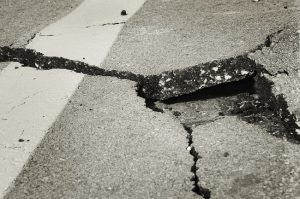GPR is an acronym for Ground Penetrating Radar, which is a scanning process that uses radio waves to “see” things below the surface of the ground. It is a very valuable tool in many industries from construction to road maintenance, and even forensics. However, there are a lot of misconceptions about GPR that should be addressed before you decide that it is the right tool for your job.
Learn some common misconceptions about GPR.
Can It Be DIY?
Some people believe that if they shell out for the equipment (or rent or borrow it), that they can do the ground imaging themselves and not have to pay a specialist. This is not true. The equipment is relatively easy to use, it’s true, but the skill (and what you are actually paying for) is in the interpretation of the results. When you look at the screen you will likely only see TV static and hyperbola. The analysts that interpret this data go through lots of training to know what the different hyperbola mean about the materials under the ground.
Can It Scan Through Everything?
In short, no, and the conditions of the ground, including the moisture content, can make it difficult to scan at all. The radar signal that the machine sends out bounces right off moisture, since water raises the conductivity of the surrounding material. This becomes an issue not just with wet ground, but also with uncured concrete. Another issue with scanning concrete is that GPR only scans to about 20 inches deep. If the concrete is a slab on the ground, that will be your limit, but if it is a wall, you’d get 20 inch depth on both sides.
Can It Differentiate Objects?
The system can differentiate between objects, but how well is a matter of the skill of the analyst. As mentioned before, the screen shows a very generalized image and even the hyperbola for different objects aren’t visibly different to the casual observer. If you need to differentiate between rebar and utility conduit, you need a skilled analyst who can sort through all of the data to give you the answer.
Is It 100% Accurate?
While it is not perfect, GPR is the best non-destructive form of testing for concrete. Under ideal conditions it is accurate to ½ inch in depth and ¼ inch from center, but most conditions are not ideal. Many things can impact the accuracy of the GPR, including the presence of wire mesh or extensive rebar.
GPR Services from Concrete Visions
Concrete Visions has over 12 years of experience and expertise in concrete scanning and we know how to detect any problems lurking beneath the surface. We use ground penetrating radar accurately and expertly and are familiar with many other methods that can be used when appropriate like concrete x-ray and electromagnetic conductivity. We are also very familiar with the latest construction safety techniques and train all of our workers to do their work quickly, accurately, and safely. If you would like to learn more about how we can help you, give us a call at (410) 766-2210 or visit us online. For more articles and tips, follow us on Facebook, Twitter, LinkedIn, and Google+.

